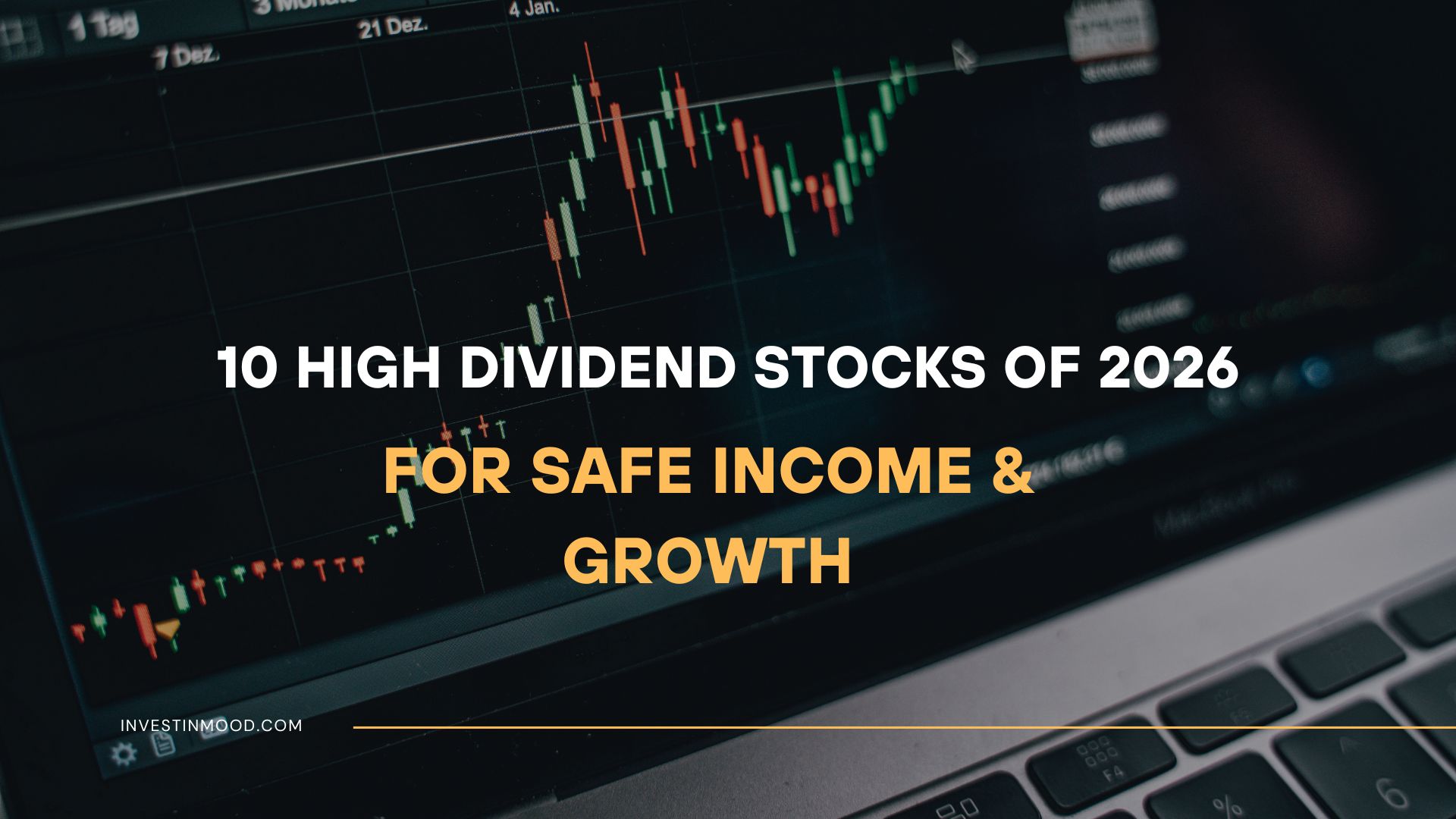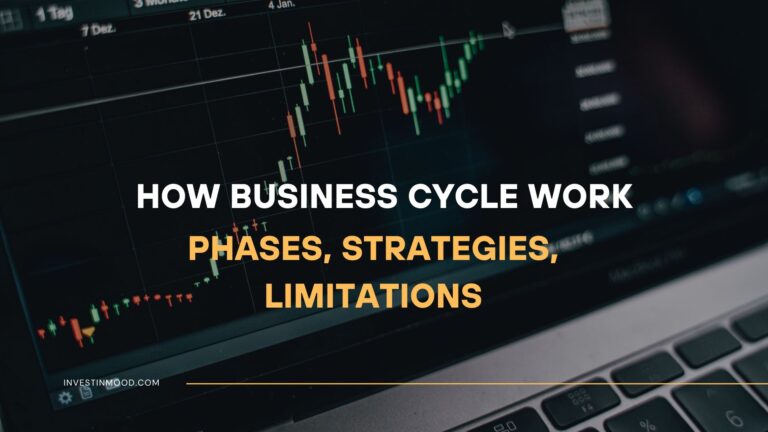
Top 10 High Dividend Stocks for 2026 Safe Income & Growth
Taking control of your financial future starts with generating passive income. This guide cuts through the noise to review the best high dividend stocks and funds available today. We help you find the perfect fit for your portfolio, whether you’re a US, UK, or Canadian investor looking to build a reliable income stream and achieve financial freedom.
What are High Dividend Stocks
High dividend stocks are shares of companies that consistently return a significant portion of their profits to shareholders in the form of cash payments, known as dividends. These are typically well-established, mature companies in sectors like utilities, consumer staples, and energy that generate stable, predictable cash flow. Instead of reinvesting all their earnings back into rapid growth, they reward their shareholders with a steady income. Think of them as the bedrock of an income-generating portfolio, providing a potential cushion during market volatility and a source of compounding returns through dividend reinvestment.
Key Takeaways
Goal-Based Stock Selection
| Your Primary Goal | Best Stock/Fund Type | Key Metric to Look For |
|---|---|---|
| Maximum Current Income | High-Yield REITs, BDCs, MLPs | Dividend Yield, Funds From Operations (FFO) |
| Income with Growth | Dividend Aristocrats, Blue-Chip Stocks | Dividend Growth History, Payout Ratio |
| Safe & Stable Income | Utilities, Consumer Staples | Payout Ratio, Company Debt Levels |
| International Diversification | Global Dividend ETFs/Stocks | Country & Currency Risk, Withholding Taxes |
For investors in the UK, consider stocks trading on the London Stock Exchange (LSE) like those in the FTSE 100 index, and be mindful of the tax-free dividend allowance. US investors should focus on understanding ‘qualified dividend’ tax rates and research stocks on the NYSE and NASDAQ. Canadians should look into the dividend tax credit available for eligible Canadian corporations.
Top 10 High Dividend Stocks of 2026
We’ve analyzed the market to bring you a diversified list of high dividend payers for 2026. Here are our top 10 picks, broken down by their sector, strengths, ideal investor profile, and key risks. (Note: All yields are approximate and as of latest data; always verify before investing).
1. Realty Income Corp. (O)
Overall Score: 4.5/5
Best For: Investors seeking ultra-reliable, monthly dividend income.
Dividend Yield: ~5.5%
Sector: Real Estate (REIT)
Realty Income is a Real Estate Investment Trust (REIT) that owns over 15,000 commercial properties primarily leased to high-quality, recession-resistant tenants like drugstores, dollar stores, and convenience stores. Its famous tagline is “The Monthly Dividend Company,” and it has a remarkable track record of increasing its dividend for over 25 consecutive years. The company’s long-term, triple-net leases provide incredibly predictable cash flow, which is the foundation of its reliable dividends.
Key Features:
- Monthly dividend payments.
- S&P 500 Dividend Aristocrat.
- Diverse tenant base across industries.
- Strong investment-grade balance sheet.
- Predictable Monthly Income The monthly payout schedule is ideal for retirees living off their dividends.
- Proven Track Record A long history of dividend growth through various economic cycles.
- Recession-Resistant Portfolio Tenants are in essential businesses, providing stability.
- Interest Rate Sensitivity As a REIT, it can be sensitive to rising interest rates, which increase borrowing costs.
- Slower Growth The business model is designed for income, not explosive capital appreciation.
Why We Picked It: We chose Realty Income for the #1 spot because it embodies the core principle of high dividend investing: reliable, sustainable, and growing income. Its monthly dividend and stellar track record make it a foundational stock for any income portfolio.
2. Verizon Communications (VZ)
Overall Score: 4.0/5
Best For: Investors seeking a high yield from a telecom blue-chip.
Dividend Yield: ~6.5%
Sector: Telecommunications
Verizon is one of the leading telecommunications companies in the US, providing wireless and wireline services to millions of customers. The company operates a critical national infrastructure, generating massive, stable cash flows. This cash flow supports one of the highest dividend yields among large-cap, blue-chip stocks. While facing competitive pressures, its massive scale and ongoing 5G investments provide a long-term moat.
Key Features:
- Very high dividend yield.
- Essential service provider.
- Strong free cash flow generation.
- Investment in future 5G technology.
- High Yield Offers a significantly higher yield than the average S&P 500 stock.
- Business Stability Mobile phone and internet services are considered modern essentials.
- Strong Cash Flow Consistently generates ample cash to cover the dividend.
- High Debt Load The company carries significant debt from spectrum acquisitions and network investments.
- Stagnant Growth The US telecom market is saturated, leading to intense competition and limited growth.
Why We Picked It: Verizon earns a top spot for its exceptional yield from a defensive, blue-chip business. For investors who prioritize current income over growth, it’s a compelling choice, though the debt level requires monitoring.
3. Johnson & Johnson (JNJ)
Overall Score: 4.7/5
Best For: Investors seeking a ultra-safe dividend with steady growth.
Dividend Yield: ~3.2%
Sector: Healthcare
Johnson & Johnson is a global healthcare giant with a diverse business spanning pharmaceuticals, medical devices, and consumer health products. This diversification across essential healthcare needs makes its earnings and dividend incredibly resilient. It is a renowned “Dividend King,” having increased its dividend for over 60 consecutive years, showcasing an unwavering commitment to returning cash to shareholders.
Key Features:
- Dividend King with 60+ years of growth.
- Diversified healthcare portfolio.
- AAA-rated balance sheet (one of the few).
- Global reach and strong brand portfolio.
- Unmatched Dividend Safety Its status as a Dividend King and AAA credit rating make its payout one of the safest.
- Recession-Proof Demand People need medicine and medical care regardless of the economic climate.
- Financial Fortress The pristine balance sheet provides immense flexibility and security.
- Lower Yield The yield is lower than others on this list, reflecting its premium safety and stability.
- Legal Overhangs The company has faced litigation related to some of its products, which can create headline risk.
Why We Picked It: Johnson & Johnson is the gold standard for dividend safety and consistent growth. It’s a must-consider core holding for any long-term, risk-averse dividend investor.
4. AT&T (T)
Overall Score: 3.8/5
Best For: Investors seeking a very high yield from a telecom turnaround story.
Dividend Yield: ~6.3%
Sector: Telecommunications
AT&T is one of the largest telecommunications companies in the US, providing wireless, broadband, and entertainment services. After spinning off its media assets, the company has refocused on its core telecom operations with a cleaner balance sheet and improved cash flow generation. The current yield remains attractive for income-focused investors.
Key Features:
- Very high dividend yield
- Refocused on core telecom business
- Massive 5G and fiber infrastructure
- Strong free cash flow generation
Pros (Text Form):
- Exceptional Yield: Offers one of the highest yields among large-cap stocks
- Business Transformation: Simplified corporate structure improves focus
- Essential Services: Provides critical communication infrastructure
Cons (Text Form):
- Heavy Debt Load: Still carries significant debt despite improvements
- Intense Competition: Faces fierce price competition in wireless market
- Growth Challenges: Mature market with limited expansion opportunities
- Exceptional Yield Offers one of the highest yields among large-cap stocks.
- Business Transformation Simplified corporate structure improves focus.
- Essential Services Provides critical communication infrastructure.
- Heavy Debt Load Still carries significant debt despite improvements.
- Intense Competition Faces fierce price competition in wireless market.
- Growth Challenges Mature market with limited expansion opportunities.
Why We Picked It: AT&T makes our list due to its massive yield and ongoing turnaround efforts. For investors who believe in the company’s refocused strategy and want high current income, it represents a compelling opportunity.
5. Energy Transfer LP (ET)
Overall Score: 4.2/5
Best For: Investors comfortable with MLPs seeking very high energy sector yields.
Dividend Yield: ~7.8%
Sector: Energy/Midstream
Energy Transfer is one of the largest and most diversified midstream energy companies in the US, operating approximately 125,000 miles of pipelines and associated infrastructure. As a Master Limited Partnership (MLP), it’s structured to distribute most cash flow to unitholders, resulting in a very high yield. The company transports essential energy products across the country.
Key Features:
- Very high distribution yield
- Diversified pipeline network
- Essential energy infrastructure
- Growing distribution payments
- Massive Yield One of the highest yields in the energy sector.
- Critical Infrastructure Operates essential energy transportation assets.
- Diversified Operations Broad geographic and product diversity.
- Complex Tax Structure MLP tax reporting requires K-1 forms.
- Commodity Sensitivity Affected by overall energy production levels.
- Debt Concerns Carries substantial leverage.
Why We Picked It: Energy Transfer offers exceptional yield from critical energy infrastructure. For investors comfortable with MLP complexity and seeking high energy exposure, it’s a top contender.
6. Pfizer (PFE)
Overall Score: 3.9/5
Best For: Investors seeking pharmaceutical exposure with solid income.
Dividend Yield: ~5.9%
Sector: Healthcare/Pharmaceuticals
Pfizer is one of the world’s premier biopharmaceutical companies, developing and producing medicines and vaccines across multiple therapeutic areas. While facing patent expirations on some key drugs, the company maintains a robust pipeline and strong cash flow generation. The dividend remains well-covered despite post-COVID normalization.
Key Features:
- Solid dividend yield
- Global pharmaceutical leader
- Diverse drug portfolio
- Strong research pipeline
- Defensive Sector Healthcare is relatively recession-resistant.
- Global Scale Massive international presence and distribution.
- Pipeline Potential Multiple new drugs in development.
- Patent Cliffs Faces loss of exclusivity on key products.
- Revenue Volatility Post-COVID revenue normalization creates headwinds.
- Regulatory Risks Subject to strict FDA oversight and approval processes.
Why We Picked It: Pfizer offers a compelling yield from a defensive healthcare sector with potential pipeline catalysts. It’s a solid choice for investors seeking pharmaceutical exposure with income.
7. British American Tobacco (BTI)
Overall Score: 4.0/5
Best For: International investors comfortable with sin stocks seeking high yield.
Dividend Yield: ~9.2%
Sector: Consumer Staples/Tobacco
British American Tobacco is one of the world’s leading tobacco and nicotine companies, with brands sold in over 200 markets. The company is transitioning toward “reduced risk” products while maintaining strong cash flow from traditional tobacco. The very high yield reflects regulatory concerns but remains well-covered by cash flows.
Key Features:
- Extremely high dividend yield
- Global tobacco leader
- Transition to reduced-risk products
- Strong cash flow generation
- Massive Yield Exceptional income generation potential.
- Addictive Products Very stable demand characteristics.
- Global Diversification Broad international revenue base.
- Regulatory Headwinds Facing increasing restrictions globally.
- Social Pressure ESG concerns limit some investor interest.
- Declining Volumes Traditional tobacco usage declining in developed markets.
Why We Picked It: BTI offers one of the highest sustainable yields available from a blue-chip company. For investors comfortable with the tobacco sector, it represents exceptional income potential.
8. 3M (MMM)
Overall Score: 3.5/5
Best For: Patient investors seeking a turnaround story with dividend history.
Dividend Yield: ~6.4%
Sector: Industrials/Conglomerate
3M is a global science and manufacturing company with products spanning multiple industries including healthcare, consumer goods, and safety equipment. The company faces legal liabilities and operational challenges but maintains a Dividend King status with over 60 years of dividend increases. The current high yield reflects these challenges.
Key Features:
- High dividend yield
- Dividend King status
- Diverse industrial portfolio
- Strong brand portfolio
- Dividend Aristocrat 60+ years of consecutive dividend increases.
- Diversified Business Operates across multiple industrial sectors.
- Innovation History Strong R&D capabilities and patent portfolio.
- Legal Liabilities Facing significant PFAS and earplug litigation.
- Operational Challenges Recent earnings and margin pressure.
- Growth Concerns Struggling with organic growth initiatives.
Why We Picked It: 3M represents a high-yield opportunity in a historically quality company facing temporary challenges. For patient investors, it offers Dividend King status at a distressed valuation.
9. AGNC Investment Corp. (AGNC)
Overall Score: 3.7/5
Best For: Sophisticated investors seeking very high yield from mortgage REITs.
Dividend Yield: ~14.5%
Sector: Financials/mREIT
AGNC Investment Corp. is a mortgage real estate investment trust (mREIT) that invests in agency mortgage-backed securities. The company leverages its portfolio to generate high yields, distributing most income to shareholders. mREITs are sensitive to interest rate changes and mortgage spread dynamics.
Key Features:
- Extremely high dividend yield
- Agency MBS focus (government-backed)
- Monthly dividend payments
- Interest rate sensitive business
- Massive Yield One of the highest yields available in public markets.
- Monthly Payments Provides frequent income distribution.
- Agency Backing Invests in government-guaranteed securities.
- Extreme Complexity Difficult business model to understand.
- Interest Rate Risk Highly sensitive to Fed policy changes.
- Dividend Volatility History of dividend cuts during stress periods.
Why We Picked It: AGNC offers astronomical yield potential for investors who understand and can tolerate the risks of mortgage REITs. It serves as a satellite holding for aggressive income seekers.
10. Vanguard High Dividend Yield ETF (VYM)
Overall Score: 4.5/5
Best For: Investors seeking diversified high dividend exposure with low costs.
Dividend Yield: ~3.9%
Sector: ETF/Diversified
The Vanguard High Dividend Yield ETF provides exposure to companies that pay above-average dividends. It tracks the FTSE High Dividend Yield Index and holds over 400 stocks across multiple sectors. The ETF offers instant diversification, low costs, and professional management of dividend stocks.
Key Features:
- Broad diversification
- Very low expense ratio (0.06%)
- Quarterly distributions
- Passive index approach
- Instant Diversification Spreads risk across hundreds of companies.
- Low Costs Minimal drag on returns from fees.
- Professional Management Automated rebalancing and stock selection.
- Lower Yield Yield is lower than individual high-yield stocks.
- No Control Cannot exclude specific companies or sectors.
- Market Correlation Still subject to broad market movements.
Why We Picked It: VYM is our top pick for most investors seeking high dividend exposure. It provides excellent diversification, low costs, and eliminates single-stock risk while still delivering solid income.
A Real-World Example: Building a Retirement Income Stream
Consider Robert, a 67-year-old retiree in Florida with a $500,000 portfolio. He needs to generate income to supplement his social security but is wary of drawing down his principal too quickly. He allocates 40% of his portfolio ($200,000) to a basket of high dividend stocks like Realty Income (O), Verizon (VZ), and Johnson & Johnson (JNJ), which collectively yield about 5%. This allocation generates approximately $10,000 per year in dividend income without him having to sell any shares. This reliable cash flow covers a significant portion of his living expenses, allowing his remaining portfolio to continue growing for the future. He uses his broker’s automatic dividend reinvestment plan (DRIP) for any income he doesn’t immediately need, further compounding his wealth.
How to Analyze a High Dividend Stock: A Step-by-Step Guide
Don’t just buy a stock for its yield. Follow this checklist to assess its health:
- Check the Dividend Yield: Is it in a reasonable range (e.g., 3%-6%) or alarmingly high (>10%)? Compare it to the industry average.
- Calculate the Payout Ratio: Find the company’s “Dividends per Share” and “Earnings per Share” (EPS). Payout Ratio = (Dividends per Share / EPS) * 100. A ratio below 75% is generally safe.
- Analyze Cash Flow: For REITs and other companies, look at Funds From Operations (FFO) instead of EPS. Ensure dividends are well-covered by free cash flow.
- Examine the Balance Sheet: Look at the company’s debt-to-equity ratio. High debt can jeopardize future dividend payments during economic stress.
- Assess the Dividend History: Use resources like Nasdaq’s Dividend History to see how long the company has been paying and raising its dividend. Consistency is a great sign.
Tax Considerations for Dividend Investors
US Investors:
- Qualified dividends are taxed at lower capital gains rates (0%, 15%, or 20%)
- Ordinary dividends are taxed at your income tax rate
- REIT dividends are typically non-qualified
- MLPs generate K-1 tax forms with complex reporting
UK Investors:
- Dividend allowance of £1,000 (2024-25 tax year)
- Tax rates of 8.75%, 33.75%, or 39.35% depending on income tax band
- Consider investing through ISAs for tax-free dividends
Canadian Investors:
- Eligible Canadian dividends receive favorable tax treatment via dividend tax credit
- Consider holding Canadian dividend stocks in TFSA accounts
Building a Diversified Dividend Portfolio
A well-constructed dividend portfolio should include:
Sector Diversification:
- 20-30% Consumer Staples & Healthcare (defensive)
- 20-30% Utilities & Telecom (stable income)
- 15-25% Energy & Materials (cyclical)
- 15-25% Financials & REITs (high yield)
- 10-20% Technology & Industrials (growth)
Yield Distribution:
- 40% Core holdings (3-5% yield)
- 30% Quality yield (5-7% yield)
- 20% High yield (7-10% yield)
- 10% Satellite positions (10%+ yield)
Common Pitfalls to Avoid in Dividend Investing
- Chasing Yield: The highest yielder is often the most dangerous. A yield that looks too good to be true usually is.
- Ignoring Total Return: Don’t focus solely on income. A stock with a 5% yield that falls 10% in price has still lost you money. Consider both dividend income and capital appreciation.
- Overconcentration in One Sector: It’s easy to find high yields in sectors like energy or REITs. Spreading your investments across different sectors (e.g., healthcare, consumer staples, tech) reduces risk.
- Forgetting About Taxes: Understand how your dividends are taxed. In non-tax-advantaged accounts, this can significantly impact your net returns.
Conclusion
High dividend stocks can be a powerful component of a well-diversified portfolio, offering income, stability, and the potential for long-term compounding. While the allure of a high yield is strong, the key to successful dividend investing lies in prioritizing sustainability and growth over sheer size. The clarity gained from understanding payout ratios, debt levels, and business models is invaluable. Start by building a foundation with proven dividend growers, and use ETFs for diversification before picking individual stocks.
Ready to start your dividend investing journey? The best way to begin is to research one or two stocks from our list and open a position. Many online brokers offer commission-free trading. Once you’ve started building your income stream, the next step is to manage your portfolio effectively. Check out our reviews of the Best Online Brokers and Portfolio Trackers to optimize your strategy.
How High Dividend Stocks Relate to Other Concepts
| Feature | High Dividend Stocks | Growth Stocks |
|---|---|---|
| Primary Goal | Current Income & Moderate Growth | Capital Appreciation |
| Income Provided | Dividends (Variable) | Typically None or Low |
| Risk & Volatility | Moderate | High |
| Tax Treatment | Qualified vs. Ordinary Dividends | Capital Gains Tax |
Related Terms
- Dividend Yield: The annual dividend per share divided by the stock’s price per share. It’s expressed as a percentage and is the primary metric for comparing income streams.
- Payout Ratio: The percentage of a company’s earnings paid out as dividends. A ratio below 60% is generally considered safe, while over 100% is unsustainable.
- Dividend Aristocrat/Kings: Companies in the S&P 500 that have increased their dividends for at least 25 consecutive years (Aristocrats) or 50+ years (Kings). They are benchmarks of dividend reliability.
- REIT (Real Estate Investment Trust): A company that owns, operates, or finances income-producing real estate. They are required by law to distribute at least 90% of taxable income to shareholders, resulting in high yields.
- DRIP (Dividend Reinvestment Plan): A program that allows investors to automatically reinvest their cash dividends into additional shares (or fractional shares) of the underlying stock, accelerating compounding.
Frequently Asked Questions
Recommended Resources
- Screen for dividend stocks on Finviz.
- Check dividend safety ratings on Simply Safe Dividends.
- Read in-depth analysis on The Motley Fool.
- Research company financials and dividend history on Yahoo Finance.





